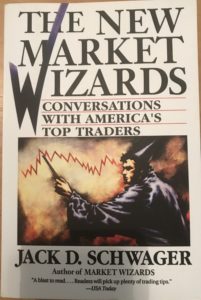
The Animus of Art
The Etymology of Animus
From Latin animus (“the mind, in a great variety of meanings: the rational soul in man, intellect, consciousness, will, intention, courage, spirit, sensibility, feeling, passion, pride, vehemence, wrath, etc., the breath, life, soul”), from Proto-Indo-European *h₂enh₁- (“to breathe”), closely related to anima, which is a feminine form.
When Bob asked me to create my Top Ten definitions of what it means for something to be Art, I dabbled thusly:
- In order for something to be Art, it must be a vulnerable expression.
- In order for something to be Art, it must provoke a reaction.
- In order for something to be Art, it must stem from a growth mindset.
- In order for something to be Art, it must remain at the mercy of ongoing definition and judgement.
- In order for something to be Art, it must be broad enough to include, and specific enough to exclude.
- In order for something to be Art, it must be perceived.
- In order for something to be Art, it must struggle to stay dynamic, pliable, adaptive.
- In order for something to be Art, it must hold a mirror up to a subconscious need.
- In order for something to be Art, it must create a choice for the recipient.
- In order for something to be Art, it must be an imperative crash of brain and ego.
And then, in this hyperbole, I was asked to elaborate on one specific definition. I pick perception.
Perception:
- It has an anatomical / biological connotation: how a living being’s senses take in and make sense of data around it.
- It has an intellectual connotation: how data once consumed is examined and analyzed, resulting in a new data set derived from implicit learning.
- It can be synonymous for personalization: how a person experiences and chooses to engage with data in a way that is unique from the way another person chooses to engages with the same data.
If a tree falls in the forest and no one is around to hear it, does it make a sound? In Schrödinger’s thought experiment, we cannot know for certain if the cat is dead or alive until the moment we open the box and observe it. Perception is reality.
Regardless of the trope, we must perceive something in order for us to understand what we are, in relationship to another. Perception allows us to exist both alone and as a part of the context around us. Art in a vacuum, unobserved, unheard, unwitnessed, is the promise of a thought, a hypothetical of the artist’s conjuring. It is only when we open the box and observe, when remain present to hear it fall, do we know for certain there is Art.

My independently written, much less artful reply to the question of “What is Art?” is as follows:
In order for something to be Art, it must:
- Be imagined
- Have an audience
- Be created
- Inspire curiosity
- Be beautiful
- Be subjectively interpreted
- Be human made*
- Be considered as Art by one person
- Be polarizing
- Evoke an emotional response
For me, the defining characteristic of whether something can be considered Art is whether it evokes an emotional response. That response may be a smile, a warming, a cooling, anger, even hatred. Art has the ability to move each of us in unique ways. It can open eyes and minds. If something that someone created changes your emotional state in any way – particularly if the artist was seeking to generate that very response in the viewer – it is Art. The lines are always blurred, always subjective, and that’s a big part of what makes Art, well, Art. One person may be moved to tears by a work, while another may dismiss it outright. Experiencing Art is a wholly individual thing, nobody can do it for you, and when you encounter someone who shares your perspectives it is an immediate connection point to a relational node in our human network.
*Side note, human made is now an outdated concept for art. AI can now “dream” and then present visual representations of those “dreams.” I find the imagery quite striking, and could consider some Art. As the technology advances, humans are teaching machines how to create, and the machines are creating some very interesting results.
by Jack D. Schwager



